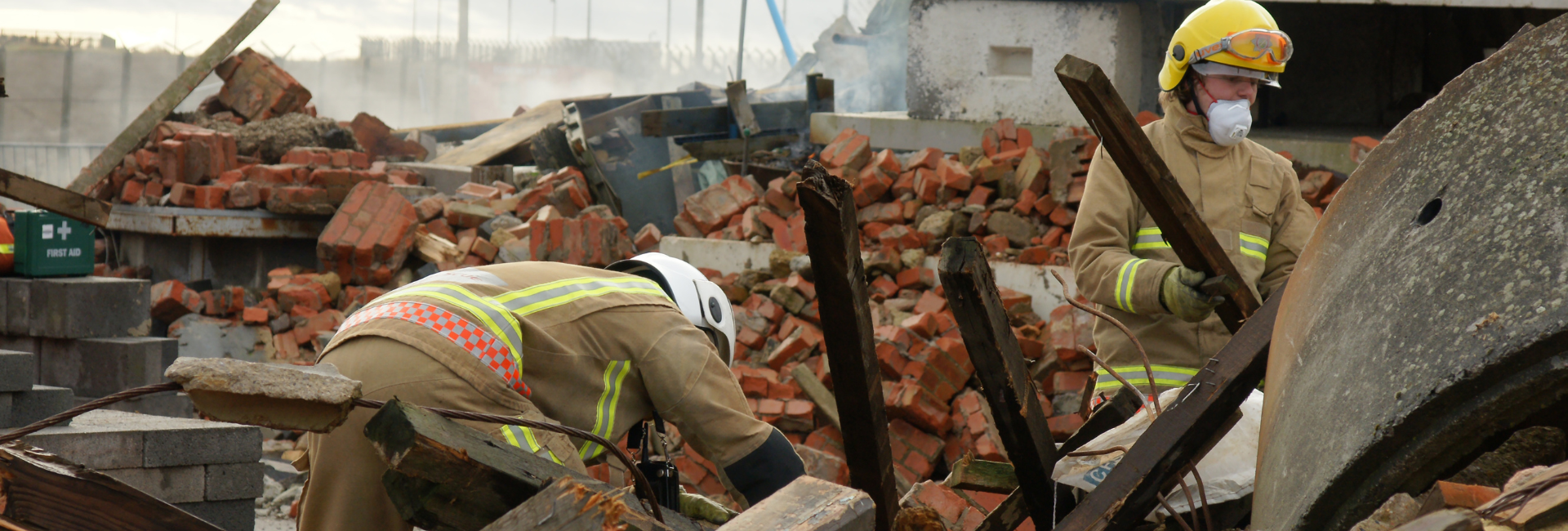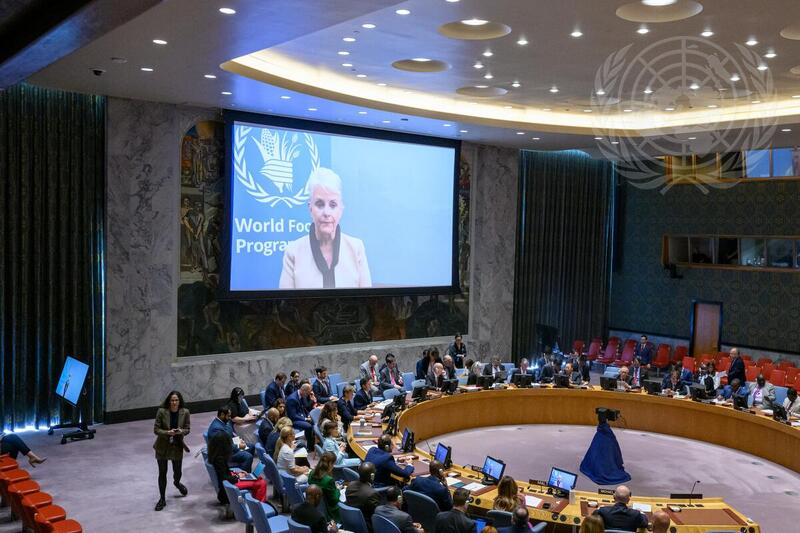'Putting the whole of our business into service': How the private sector can power humanitarian response
September 14, 2023 | By Michael Miebach
In just the last two weeks, severe weather and natural disasters have destroyed communities and ravaged lives in Morocco, Libya, Greece and beyond. Across the world, governments, aid agencies and the private sector are rushing to help. But the private sector can do more – both to respond to crises and build resilience. It will take partnerships, technology and a commitment to capacity building. Mastercard’s CEO was invited to share the company’s insights on how to advance public-private humanitarian partnerships before the U.N. Security Council in New York City today. A video of the event is available here; his remarks begin about 25 minutes into the video.
As prepared for delivery.
Mr. President, members of the Security Council.
Thank you for your leadership and thank you for advancing how the world can address its humanitarian needs.
Many companies work with U.N. organizations to tackle critical challenges to security and peace. So I am humbled by the invitation to address the Council and share a view on how we can better work together.
There’s no doubt this is a critical topic. We only need to look at Morocco and Libya this week to see the overwhelming need.
Let me start with a thought on why companies need to be involved: It is a shared belief that businesses cannot succeed in a failing world. Humanitarian crises impact our fellow citizens – and sometimes our colleagues. Hence, this work to support global stability and predictability does become personal.
During my time today, I will share observations and learnings on three dimensions that can activate companies like mine to help those who need it most.

Cindy McCain, the executive director of the World Food Programme, also briefed the U.N. Security Council Thursday on the power of public-private partnerships to respond to disasters. (Photo credit: Loey Felipe/United Nations.)
First, partnerships.
This is not a new concept. However, the challenges stretch beyond the capabilities of any one sector. Coordination is key.
Humanitarian relief has long been the domain of government, philanthropic and development institutions. The private sector was seen as a source of financial donations for supplies and in-kind aid.
That has changed. Money is important, but companies can offer so much more.
The private sector stands ready to tackle the challenges at hand in partnership with the public sector. We can use our core competencies to strengthen the infrastructure, innovate new approaches and deliver solutions at scale. When we succeed in this work, it unlocks greater inclusion, equality and resilience. This is key, especially for the most vulnerable, as there will be more crises and challenges.
But we can and should change the dynamics. We encourage the United Nations to be even more direct and deliberate in its outreach to the private sector.
When like-minded groups come together, we can align on objectives. That clarifies roles and enables companies to do what they do best — solve problems by building and deploying solutions with commercial rigor.
It is about putting the whole of our businesses into service. That includes activating our creativity, technology, relationships, data science and know-how to make it happen — again and again.
There are many partnership examples to consider, but I think back to India’s COVID surge in spring 2021. Many companies rushed in to help, but they were working in silos.
It took the government and selected NGOs to identify what the needs were. From there, roles could be assigned so that the right impact — doctors, field hospitals, beds and respirators — could be delivered to where it was needed most. We were right in the middle of all that and saw the power of a coordinated response.
With structured public and private partnerships, we can see one plus one equal three.
Next, technology.
We all know that technology can be transformational. When directed in the right ways, technology can grow economies and expand opportunities. But let’s also be clear — technology is not simply an app or even the end product.
It is a tool that can serve as a foundation — an infrastructure — to do more. This digital infrastructure delivers greater impact when it reinforces privacy, trust and equal access … and in a commercially sustainable way.
We need to ensure technology is relevant to the people who use it. We can’t simply bring existing solutions to new places. There needs to be a deep understanding of the local context to appreciate how a solution can actually solve the problem.
This approach has helped the World Food Programme, the Red Cross and Red Crescent and many others implement digital cash and voucher assistance programs in a way that is meaningful locally.
Digital cash programs have since become a fast, transparent, secure and more effective way to deliver life-saving assistance at the last mile. Digital cash helps the recipient maintain a sense of dignity — even in vulnerable situations — since they individually decide how to spend those funds.
The value of technology is also in making the complex simple. Think about the sheer amount of data that exists. We can use technology to identify trends and make better decisions.
For example, when a natural disaster strikes, data can direct people to the services they need. After the recent Hawaii wildfires, data helped people find nearby fuel stations and other businesses that were still open. The same type of insights can be applied in many other ways, including helping refugees determine the best places to resettle.
Let’s challenge ourselves to uncover ways technology can be used to help the most vulnerable. Let’s leverage AI and generative AI and other emerging technologies in this effort.

Igli Hasani (second from below at table), the Albanian minister for Europe and Foreign Affairs and president of the U.N. Security Council for the month of September, convenes Thursday's meeting on advancing public-private humanitarian partnership. (Photo credit: Loey Felipe/United Nations)
Partnerships and technology.
That brings me to the third point — capacity building.
It’s about driving the shift from response to preparedness by reinforcing the skills and resources the most vulnerable need to survive and thrive.
Let me illustrate with an example. In the Global South, 80% of the agricultural industry are smallholder farmers. For generations, their processes have remained virtually the same, and many struggled to earn a living wage. There is the potential to help farmers to build for their futures.
Take Christina Kibonde, a coffee farmer in Uganda. For generations, her family was dependent on middlemen to reach buyers. As a result, she had a very limited view about market prices, which restricted her earnings and opportunity. Technology and partnerships helped to break this cycle.
A technology platform called Farm Pass created new access. Technology ensured she is digitally included.
Today, she is connected directly with buyers, negotiating the best price for her beans. And this digital record — including getting paid electronically — opens access to credit to potentially expand her operations and invest in fertilizers and seeds.
Christina is now more prepared for what may come. So too are the millions of other smallholder farmers activating this platform. It is a simple solution with the potential for long-term impact. A powerful example of capacity building.
We must invest in local capacities like education, financial literacy, cybersecurity skills and more — and that ahead of time and not only in response to emergency scenarios. When we are successful in this effort, we will enable more people to create more opportunities for the long-term.
As I close, I’d be remiss to note that even with our collective effort, we will not be able to stop disasters from happening. But we can help more people prepare and be resilient, having a say in their future.
I am optimistic on our collective ability to deliver for our fellow citizens because of engagements and dialogue like we are having it here today.
As I said, you have a willing and committed partner in the private sector. We just need to be engaged.
We stand ready to put our technology to work to solve real challenges.
We stand ready to leverage our competencies to strengthen skills, and with that build capacity towards more resilience.
That is what the world needs. Thank you.
